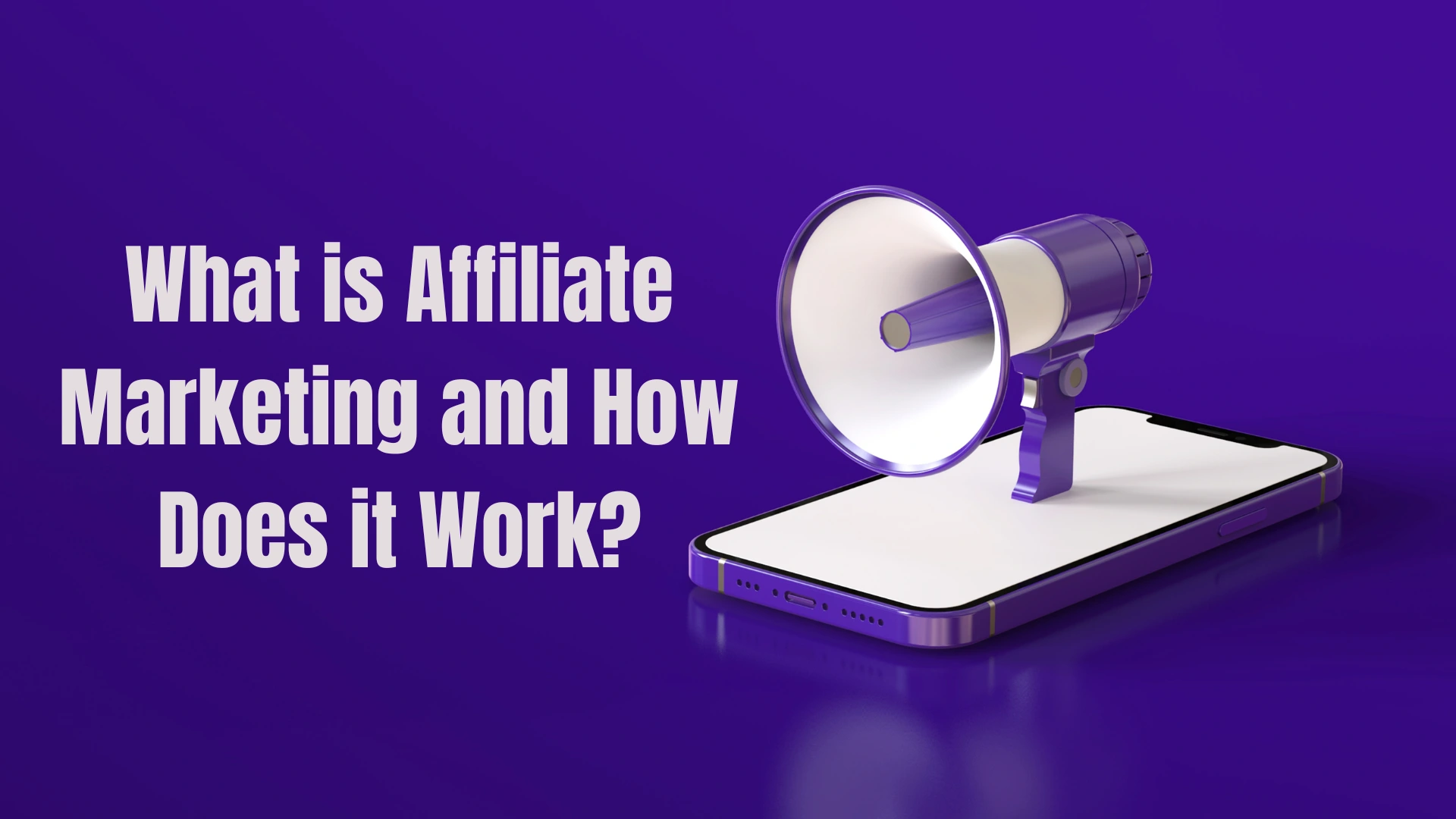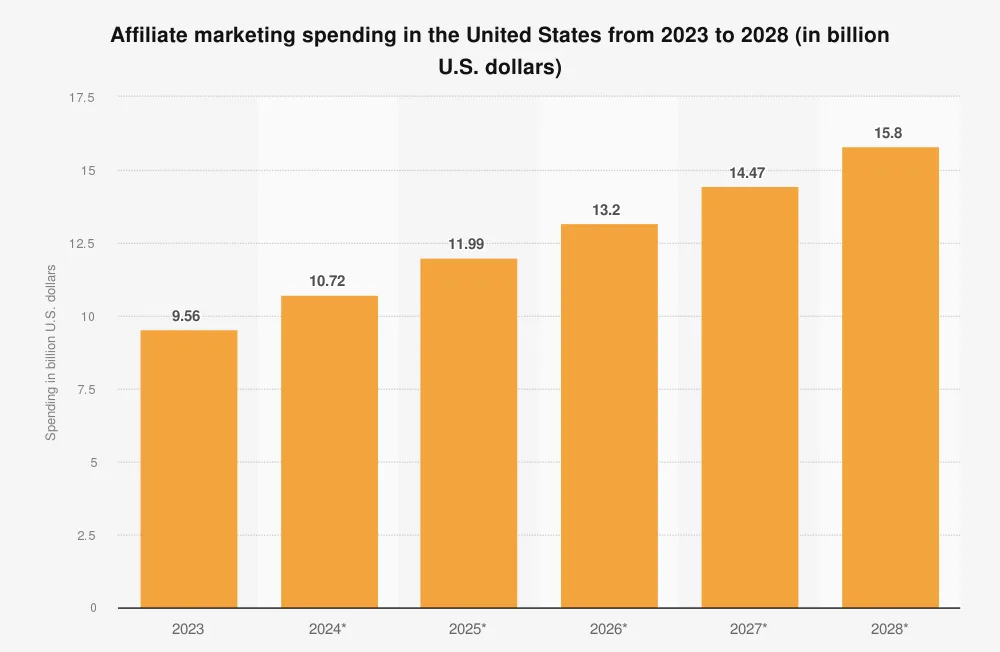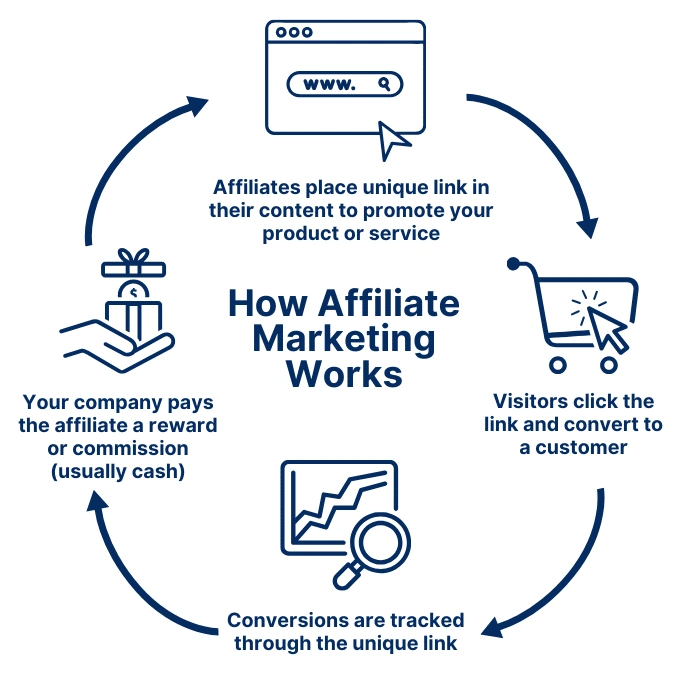What is Affiliate Marketing and How Does it Work?

I can still recall the moment I discovered affiliate marketing for the first time. I was scrolling through a blog, and the writer casually mentioned a product they loved, with a little link underneath saying, “I may earn a small commission if you purchase through this link.”
I clicked it, curious, and it got me thinking: “Wait, they get paid just for recommending stuff they actually use?” That small moment turned into a rabbit hole of research and, eventually, my affiliate marketing journey.
So, what exactly is affiliate marketing, and how does it all work?
Imagine this: You’re the connector, helping people find the products or services they need, and in return, you get a piece of the pie. It’s like being the friend who always has the best recommendations, but with a paycheck attached.
Whether it’s sharing links in blog posts, YouTube videos, or even Instagram stories, affiliate marketing is about turning trust and expertise into income. Sounds simple, right? Well, there’s more to it, but don’t worry, I’ll break it all down in a way that makes sense. Let’s dive in!
Affiliate Marketing For Dummies is my top recommended book for anyone looking to understand what affiliate marketing is and how it works. It covers the basics, breaks down key strategies, and helps you start your journey with confidence!
Key Takeaways
- Affiliate marketing is a process where an affiliate earns a commission for marketing another person’s or company’s products.
- Affiliate marketing spending in the United States is expected to reach $12 billion in 2025.
- Affiliate marketing comprises three key parties: seller and product creators, affiliates or advertisers, and consumers.
- Affiliate marketing is a performance-based marketing model that allows individuals to earn passive income.
- Affiliate marketing has become a significant aspect of online marketing.
- Affiliate marketing can be a lucrative online business strategy for creators and entrepreneurs.
What is Affiliate Marketing
In layman’s language, affiliate marketing is like being a middleman who connects people to products or services they might need. You partner with a company and promote their products using a special link, and whenever someone buys through that link, you get paid a small portion of the sale as a thank-you.
It’s a simple way to earn money by recommending products you believe in. It’s kind of like getting a referral bonus, but online.
At its core, affiliate marketing is about promoting someone else’s stuff: whether it’s a physical product, a digital tool, or even a service, and earning a cut whenever someone buys through your link.
In 2023, affiliate marketing spending in the U.S. hit $9.56 billion, around $10.72 billion in 2024 with forecasts predicting an increase to $12 billion by 2025. This growth signals plenty of opportunities for those wanting to get in on the action.

The beauty of affiliate marketing is in its simplicity and collaboration. Sellers don’t need to do all the marketing themselves; affiliates step in to bridge the gap using their blogs, YouTube channels, or social media platforms.
Meanwhile, consumers aren’t paying extra; they’re just being guided to something they probably need anyway.
Affiliates earn through different commission models. The most common is pay-per-sale, but some programs pay for leads or pay-per-click.
For example, Amazon Associates gives up to 10% commissions, while eBay’s Partner Network offers up to 4%, depending on the product category. The money comes from a slice of the revenue, making it an efficient system for everyone involved.
Affiliate marketing isn’t some secret millionaire strategy. It’s about smartly leveraging the connections between sellers, affiliates, and consumers. Once you understand the basics, you’re halfway to making it work for you.
How Does Affiliate Marketing Work?
Affiliate marketing is simple: promote products, drive traffic, and earn commissions. But let’s break it down properly.

The Key Players
1. Affiliates – These are the people (or companies) promoting products. They don’t own what they sell. Instead, they use content, ads, or social media to bring in customers. Bloggers, YouTubers, and influencers do this all the time.
2. Merchants (Advertisers) – These are the businesses selling the actual product or service. It could be Amazon, a software company, or even a small business. They need sales, so they team up with affiliates to get more customers.
3. Affiliate Networks – Think of these as the middlemen. They connect affiliates with merchants and handle tracking, payments, and reporting. Not all programs use a network, but big ones like ShareASale and CJ Affiliate make life easier.
4. Consumers – The buyers. They click on an affiliate link, purchase a product, and keep the whole system running. They don’t pay extra—the merchant pays the commission.
The Process Step-by-Step
- Choose a Product – Find a product or service you want to promote. Stick to something relevant to your audience.
- Get a Unique Affiliate Link – Once you join an affiliate program, you get a special tracking link. This tells the merchant where the sale came from.
- Drive Traffic – This is where the work happens. You can use SEO, social media, email marketing, or ads to bring visitors to your link.
- Earn Commissions – When someone clicks your link and buys, you get paid. Simple as that. Some programs pay per sale, while others pay per lead or click.
Affiliate marketing isn’t rocket science. It’s about recommending good products to the right people and getting rewarded for it. Pick a niche, start promoting, and watch the commissions roll in.
Different Types of Affiliate Marketing
Not all affiliate marketing is the same. Some people just send traffic, while others build real trust. Let’s break it down.
1. Unattached Affiliate Marketing
This is the simplest type. You don’t need a website, a brand, or personal experience with the product. You just drive traffic—usually through paid ads—and hope people click and buy.
Think of it like putting up a billboard. You don’t care who sees it or what they do next. You just need enough eyeballs to make commissions. It’s fast, but it’s also risky. If you stop running ads, your income dries up.
2. Related Affiliate Marketing
Here, you’re promoting products connected to your niche, but you haven’t personally used them. You might run a fitness blog and recommend a protein powder because it fits your audience, even if you haven’t tried it.
This works because you have some credibility. People trust you to know what’s relevant. But if you promote the wrong product, it can backfire. You need to research and be sure it’s something your audience actually wants.
3. Involved Affiliate Marketing
This is the most personal and effective type. You promote products you’ve used, tested, and believe in. Your audience sees you as a trusted voice, not just another marketer.
It’s like telling a friend about a great restaurant. You’re not just selling—you’re sharing an experience. When people trust you, they’re more likely to buy, and they’ll come back for more recommendations.
All three types work, but involved affiliate marketing builds the strongest, most sustainable income. If you’re in this for the long haul, this is where you want to be.
The Benefits of Becoming an Affiliate Marketer
Getting into affiliate marketing is one of the smartest moves if you’re looking for flexibility and passive income.
1. Imagine making money while you sleep or go about your day, that’s the beauty of it. You earn commissions whenever someone buys a product through your unique link. Simple as that.
2. The best part? It doesn’t take a fortune to start. For instance, when I began, I only spent $34 on a hosting plan for my WordPress website. That’s all it took to get my foot in the door. From there, the opportunities grew.
3. Affiliate marketing is also highly scalable, meaning as you put in more effort; whether that’s creating more content, running ads, or expanding your network — your income can grow significantly without massive extra costs.
4. Another big win is that you get to partner with reputable brands, which instantly boosts your credibility. People trust well-known companies, and by promoting them, you’re seen as a trusted source too.
Plus, you’re only rewarded for actual performance. Businesses pay you when you drive results, making this a low-risk, high-reward setup.
5. Then there’s the high return on investment (ROI). Many affiliates report a 10-to-1 return on their ad spend, with commissions ranging between 5% and 15%.
On top of that, promoting quality products enhances your reputation and builds social proof, which can lead to even bigger opportunities.
With affiliate marketing spending in the U.S. expected to increase by 2025, the potential is massive. Whether you’re just starting out or looking to diversify your income streams, affiliate marketing is the real deal.
The secret is to start small, stay consistent, and let the opportunities scale as you go.wth means more chances to make more money and grow your affiliate income.
How Affiliates Make Money (Commission Models)
Affiliate marketing isn’t a one-size-fits-all game. The way you earn depends on the commission model you choose. Each approach caters to different skills and audience types, making it possible for affiliates to monetize their efforts in multiple ways.
Let me break it down so you can find the best fit for your strategy.
1. Pay-Per-Click (PPC) Programs
With PPC programs, you get paid every time someone clicks on your affiliate link, regardless of whether they make a purchase. It’s all about traffic volume.
This model works best if you run a high-traffic blog, leverage social media ads, or excel at crafting engaging content that drives clicks. Think of it as getting paid for grabbing attention—perfect for affiliates skilled in traffic generation.
2. Pay-Per-Sale Programs
This one’s a classic. earn a commission whenever someone buys through your link. If you’re great at building trust and providing value, this one’s for you.
For example, if you specialize in product reviews, tutorials, or in-depth guides, you can naturally weave in affiliate links that lead to conversions. The key is authenticity—when people trust your recommendations, they buy, and you get paid.
Recommended reading: 7 Simple Steps to Making Money With Pay-Per-Sale Affiliate Programs
3. Pay-Per-Lead Programs
Here, it’s about quality over quantity. You earn commissions when users complete specific actions, like signing up for a newsletter, filling out a form, or starting a free trial.
It’s perfect for those who focus on targeted traffic. For example, if you’re great at driving email opt-ins or encouraging users to try software, this could be your niche.
4. Two-Tier Affiliate Programs
This is where things get interesting. Two-tier programs allow you to earn commissions not just from your direct referrals but also from the affiliates you recruit. It’s like building a passive income stream from a growing network.
It’s like a mini-team you’re building. If you’ve got strong networking skills, this is a great way to scale your earnings while helping others succeed.
Each of these models has its charm and fits different marketing styles. Whether you’re a traffic guru, a content wizard, or someone with an eye for networking, there’s a program that aligns with your strengths.
Experiment, stay consistent, and watch which strategy resonates most with your audience.
Must Read: 8 Main Key Features of a Good Affiliate Program
Best Platforms for Affiliate Marketing
Affiliate marketing works best when you use the right platform to reach your audience. Some platforms are great for SEO and long-term traffic, while others are better for fast engagement and sales.
Let’s break down the top ones and how they work.
1. Websites & Blogs – SEO-Driven Traffic
This is the gold standard for affiliate marketing. A blog lets you create in-depth content, rank on Google, and earn passive traffic for years.
Write product reviews, comparisons, and guides. Use SEO to target high-intent keywords—people actively looking to buy.
A website gives full control over content and monetization. No algorithm changes messing with your reach. The only challenge is that it takes time to build authority. But once your blog ranks, commissions roll in 24/7.
2. YouTube & TikTok – Video-Based Promotions
Some people prefer watching over reading. That’s where YouTube and TikTok shine. Video content builds trust fast because viewers see and hear you. Unboxing videos, tutorials, and product comparisons work well.
YouTube is great for evergreen content—your videos stay searchable for years. TikTok? It’s fast, viral, and perfect for quick product demos. Use affiliate links in descriptions, pinned comments, or your bio.
3. Social Media – Facebook, Instagram, Twitter
Social media can drive more traffic to affiliate links. The trick? Post engaging content, not just links. Share real experiences, product tips, and short reviews.
Facebook Groups work well for niche communities. Instagram Stories and Reels let you show off products in action. Twitter is perfect for quick promotions and trending topics. Just don’t spam. Build trust first, sell later.
4. Email Marketing – Direct Promotions
Email lists are gold in affiliate marketing. Unlike social media, you own your list—no risk of losing followers overnight. Build an email list by offering something valuable (free guides, checklists, or exclusive deals).
Send recommendations, reviews, and exclusive discounts straight to inboxes. Keep emails short, personal, and useful. No one likes spammy sales pitches. Warm up your audience first, then drop affiliate links naturally.
5. Paid Ads – Google Ads, Facebook Ads
Want fast results? Paid ads put affiliate offers right in front of buyers. Google Ads work well for high-intent searches (like “best-running shoes for beginners”). Facebook Ads are great for targeting specific interests.
But ads cost money. Test small budgets first. Track what works before scaling up. And make sure the commissions cover ad costs, or you’ll burn through cash fast.
Remember each platform has pros and cons. Blogs and YouTube are great for long-term passive income. Social media and TikTok bring fast engagement. Email keeps your audience close, while ads speed up results—if done right.
Start with one or two platforms. Pick what fits your style, stay consistent, and keep testing. That’s how you win at affiliate marketing.
Common Challenges in Affiliate Marketing
Affiliate marketing sounds simple—promote products, earn commissions. But there are real hurdles that can trip you up. Here are some of the biggest ones and how to handle them.
1. Getting Traffic – SEO and Paid Ads
No traffic means no commissions. SEO is your best long-term bet, but it takes time. You need quality content, keyword research, and backlinks to rank. If you’re impatient, paid ads can get instant results.
The catch? They cost money, and profit margins can be tight. Test small, track results, and scale what works.
Here are the Best 15 Ways to Drive Traffic to Your Affiliate Links (Tested and Proven)
2. Finding the Right Products – Research & Testing
Not every product is worth promoting. Some have low payouts, high refund rates, or just don’t convert. Check reviews, test products, and analyze commission structures before committing.
A high-ticket item means nothing if no one buys it. Stick with products that solve real problems and fit your audience.
Recommended reading: How to Choose the Right Products to Promote as an Affiliate
3. Stiff Competition – Niche Selection & Differentiation
Popular niches are crowded. If you blend in, you’ll get buried. Find a sub-niche or a unique angle. Instead of “best protein powder,” go for “best protein powder for seniors” or “for muscle recovery.”
Personal experience, data, and in-depth comparisons help you stand out. The goal is to be the go-to source, not just another affiliate site.
4. Affiliate Program Policies – Understanding Rules & Commissions
Every program has rules. Some ban certain traffic sources (like paid ads on branded terms). Others hold commissions for months before paying.
Read the fine print. Know the payout schedule, cookie duration, and refund policies. A 90-day cookie is way better than a 24-hour one. The details matter.
Remember: Every challenge has a solution. Keep learning, testing, and improving. That’s how you win in affiliate marketing.
How to Get Started with Affiliate Marketing
Getting into affiliate marketing is simple, but success takes strategy. You need the right niche, platform, and traffic.
Let me explain…
1. Choose a Niche
Don’t just pick a random topic. Find something profitable that people actually spend money on. Health, finance, and tech are always hot. But go deeper—“home fitness gear” beats just “fitness.” Less competition, more targeted buyers.
If you’re passionate about it, even better. Promoting something you enjoy makes content creation easier. But don’t get stuck in a dead-end niche. If no one’s buying, passion won’t pay the bills.
Here is How to Choose the Best Niche for Your Affiliate Marketing Business
2. Find Affiliate Programs
Once you have a niche, find products to promote. Big networks like Amazon Associates, ShareASale, CJ Affiliate, and Impact have thousands of options.
Look for programs with high commissions and recurring payouts. Digital products and software often pay more than physical goods. And check cookie durations—a 30-day cookie is better than a 24-hour one.
Here is How to Choose the Best Affiliate Programs for More Earnings and Long-Term Growth
3. Build a Platform
You need a place to promote products. A blog, YouTube channel, or even TikTok can work. Blogs are great for SEO, but video converts like crazy. Pick what fits your style.
Don’t overthink this. Start with what you can manage. A simple website with WordPress or a free YouTube channel works. You can always expand later.
4. Create Valuable Content
Content is what gets people to trust you. Write reviews, comparisons, and tutorials. Help people make buying decisions. Answer real questions, like “Is XYZ software worth it?”
Skip generic fluff. If your content is just copied from product pages, no one will care. Be honest, be helpful, and show expertise. People buy from those they trust.
Recommended reading: Why Valuable Content Wins in Affiliate Marketing (And How to Create It)
5. Drive Traffic
No traffic, no commissions. SEO takes time but pays off long-term. Social media is faster, but platforms change. Ads can work, but they cost money.
Use Google, Pinterest, and YouTube to get free traffic. Join niche Facebook groups. Answer questions on Quora. Find where your audience hangs out and be there.
Read Also: Best SEO Strategies for Affiliate Websites: How to Get Free Organic Traffic
6. Track & Optimize
Affiliate marketing isn’t set-and-forget. Check what’s working. Use Google Analytics, ClickMeter, or the reports inside your affiliate dashboard. See which pages or videos bring in sales.
Double down on what’s making money. If something isn’t working, tweak it. Try a better call to action. Test a new headline. Small changes can make a big difference.
Recommended reading: Top 14 Free Link Tracking and Management Tools for Affiliate Marketers
My final statement is that affiliate marketing isn’t instant, but it works if you stay consistent. Pick a niche, create content, and drive traffic. The sooner you start, the sooner you’ll see results.
I’ll admit, it’s a lot at first, but once you see the data in action, you’ll wonder how you ever worked without it.
Building Trust and Staying Compliant in Affiliate Marketing
If there’s one thing I’ve learned in affiliate marketing, it’s that trust is everything. Your audience isn’t just a bunch of clicks, they’re real people who are choosing to spend their time (and sometimes money) with you.
Being upfront and honest about what you’re doing is non-negotiable if you want to build a lasting relationship. Let’s talk about how to get it right.
1. FTC Disclosure Requirements
Let’s start with the legal stuff because, honestly, it’s important. The Federal Trade Commission (FTC) has some clear rules: if you’re earning commissions or promoting products provided by a company, you’ve got to disclose your affiliate relations to your audience. And no, burying it in fine print isn’t enough.
For example, you could say something simple like:
“I may earn a commission if you purchase through my links. These are products I personally recommend!”

It doesn’t have to be fancy or awkward, just clear and honest. It’s like a handshake — you’re saying, “Hey, here’s how this works.”
| Compliance Aspect | Best Practice | Potential Penalty |
|---|---|---|
| FTC Disclosures | Clear and conspicuous statements | Fines and loss of trust |
| Data Privacy (GDPR) | Obtain explicit consent for data usage | Heavy fines and legal action |
| Transparency | Honest and authentic promotion | Damage to reputation |
| Ethical Practices | Avoid spamming and misleading claims | Loss of affiliate partnerships |
2. Best Practices for Authentic Promotion
Now, let’s talk about promoting the right way. If you’re pushing products you don’t actually care about or have never tried, your audience will see through it. Instead:
- Stick to what you believe in: Only promote products or services you genuinely trust.
- Keep it real: Share personal experiences and honest reviews. Did the product solve a problem for you? Say so.
- Avoid sketchy tactics: No spamming, no exaggerated claims, no fluff. Your reputation is worth more than a quick commission.
When you focus on authenticity, people are more likely to trust you, and trust leads to clicks, conversions, and long-term success.
3. Building Long-Term Relationships with Your Audience
This is also where the magic cooks. Trust isn’t built in a day, it’s earned over time. Stay connected with your audience by:
- Sharing valuable content regularly: Whether it’s tips, tutorials, or personal stories, give them something they can use.
- Listening to their feedback: Pay attention to comments, emails, and suggestions. It shows you care.
- Being consistent: Show up for your audience, keep your promises, and always stay transparent.
A loyal audience isn’t just good for your affiliate marketing, but also good for your soul. When people trust you, they’ll keep coming back, and those clicks will take care of themselves.
Trust and compliance are the foundation of a successful affiliate marketing journey. Be real, stay honest, and prioritize your audience’s experience.
Do that, and you’ll be building more than a business, you’ll be building a community.
Common Affiliate Marketing Mistakes You’ll Want to Dodge
Starting affiliate marketing can feel like jumping into the deep end of a pool. There’s so much potential, but one wrong move and… well, you’re swimming against the tide.
I’ve been there, and trust me it’s not easy, avoiding these common affiliate marketing mistakes can save you headaches (and wasted time).
Let’s break it down…
1. Picking the Wrong Niche
Here’s a rookie move: diving into a niche just because it sounds profitable. If the people in your niche aren’t ready to buy or worse, if you don’t care about the topic then it will be an uphill battle.
For example, I once tried a super niche tech product because the commissions looked tempting. The problem? My audience wasn’t even remotely interested, and the conversion rates? Yeah… practically zero. Lesson learned: pick a niche with buying intent and passion.
2. Ignoring SEO (Search Engine Optimization)
If you’re not showing up on Google, how will people find you? Neglecting SEO is like having a store in the middle of nowhere with no signs leading to it.
Start with:
- Researching long-tail keywords that align with your audience’s needs.
- Optimizing your posts for both readability and search engines.
- Focusing on building backlinks from reputable sources.
SEO might feel slow, but it’s one of the most sustainable ways to grow your traffic.
3. Going Overboard with Promotion
I get it. You’re excited to share your affiliate links. But if every single post you make screams, “BUY THIS,” your audience will tune out faster than you’d think.
Instead, mix it up. Offer value first: tutorials, how-tos, or even personal stories. For instance, instead of writing “This product is the best, click here!” share how the product solved a specific problem for you. People connect with authenticity, not a sales pitch.
4. Putting All Your Eggs in One Basket
Relying on one traffic source or affiliate program? Big mistake. Algorithms change, and programs can end abruptly. Diversify your income streams. Use multiple affiliate networks, and explore different platforms like social media, email, and blogs.
Think of it this way: if one stream dries up, others can keep you afloat.
5. Skipping the Numbers Game
Not tracking your performance is like throwing darts in the dark. Are people clicking? Are those clicks converting? Without analytics, you won’t know what’s working and what isn’t.
Tools like Google Analytics or affiliate dashboards can help. Monitor metrics like click-through rates (CTR), conversion rates, and top-performing content. Trust me, these numbers are gold.
6. The Temptation to Copy Others
Successful affiliate sites can feel like cheat codes. But blindly copying someone else’s strategies without understanding why they work is a fast track to frustration. What works for them might not fit your audience or style.
Focus on building something that reflects you. Experiment, tweak, and learn as you go.
Affiliate marketing is a learning curve, but avoiding these common mistakes can fast-track your success.
Keep it authentic, keep it strategic, and don’t forget you’re building more than just an income. You’re building trust, credibility, and a foundation for long-term growth. be flexible for long-term success.
Scaling Your Affiliate Marketing Business
To grow your affiliate marketing business, you need smart strategies and hard work. Diversifying your income streams can help you earn more and not rely on just one thing. By promoting different products or joining many affiliate networks, you can earn more.
It’s important to expand your online presence to reach more people. Use different social media platforms and try new content like videos and podcasts. Also, use SEO, paid ads, and social media to get more traffic.
1. Diversifying Income Streams
Promote a variety of products in your niche to get more value from each lead. Good content with product promotions can lead to more sales, increasing your affiliate income.
2. Expanding Your Online Presence
Use platforms like YouTube, Instagram, and blogs to reach different groups of people. Knowing your niche well makes it easier to grow into related areas.
3. Advanced Monetization Techniques
Make your own digital products or offer coaching to add to your affiliate income. Using upsells and cross-sells can also increase your earnings.
Recommended reading: 10 Proven Affiliate Marketing Strategies for Beginners That Actually Work
Conclusion: Taking Your First Steps in Affiliate Marketing
Affiliate marketing isn’t just about throwing up links and hoping for the best. It’s about strategy, trust, and learning from your mistakes. You’re going to stumble, we all do.
When I first started, I made pretty much every mistake you can think of: picking the wrong niche, spamming links like crazy, and completely ignoring SEO. But here’s the thing, it’s all part of the process.
What sets successful affiliate marketers apart is their willingness to adapt, experiment, and genuinely care about their audience. When you focus on providing value and building trust, the commissions start to follow naturally.
Read Also: What 85% of Successful Affiliates Do Differently (And How You Can Join Them)
Take it step by step. Keep learning, keep testing, and don’t let a few bumps in the road discourage you. Remember, you’re building something bigger than just passive income: you’re building credibility, relationships, and a foundation for long-term success.
So, get out there, try new things, and don’t be afraid to fail. Because of every mistake? It’s just another step toward getting better. You’ve got this.
Frequently Asked Questions
What is affiliate marketing and how does it work?
Affiliate marketing lets you earn money by promoting products. You get a commission for each sale made through your link. It’s a way to make money online by working with merchants and sharing their products with your audience.
What is the most common mistake beginners make in affiliate marketing?
One of the biggest mistakes is choosing a niche without proper research. Beginners often pick niches based on trends or personal interests but fail to consider the buying intent or market demand. Always analyze your niche for profitability and long-term potential.
Why is SEO important for affiliate marketing, and how can I improve it?
SEO ensures your content is visible to the right audience. Without it, your efforts may go unnoticed. Start by targeting long-tail keywords, optimizing headlines, and providing high-quality, helpful content. Tools like SEMRush or Ahrefs can guide your SEO efforts.
How can I choose the right niche for my affiliate marketing business?
Pick a niche that you love and know well. Look at its profitability, competition, and your ability to create content. Good market research will help you find a profitable niche.
How can I avoid over-promoting products in my affiliate marketing content?
Balance is key. Instead of pushing products constantly, focus on providing helpful, valuable content. Mix in tutorials, guides, or personal stories related to your niche. Let your promotions feel natural and organic.






